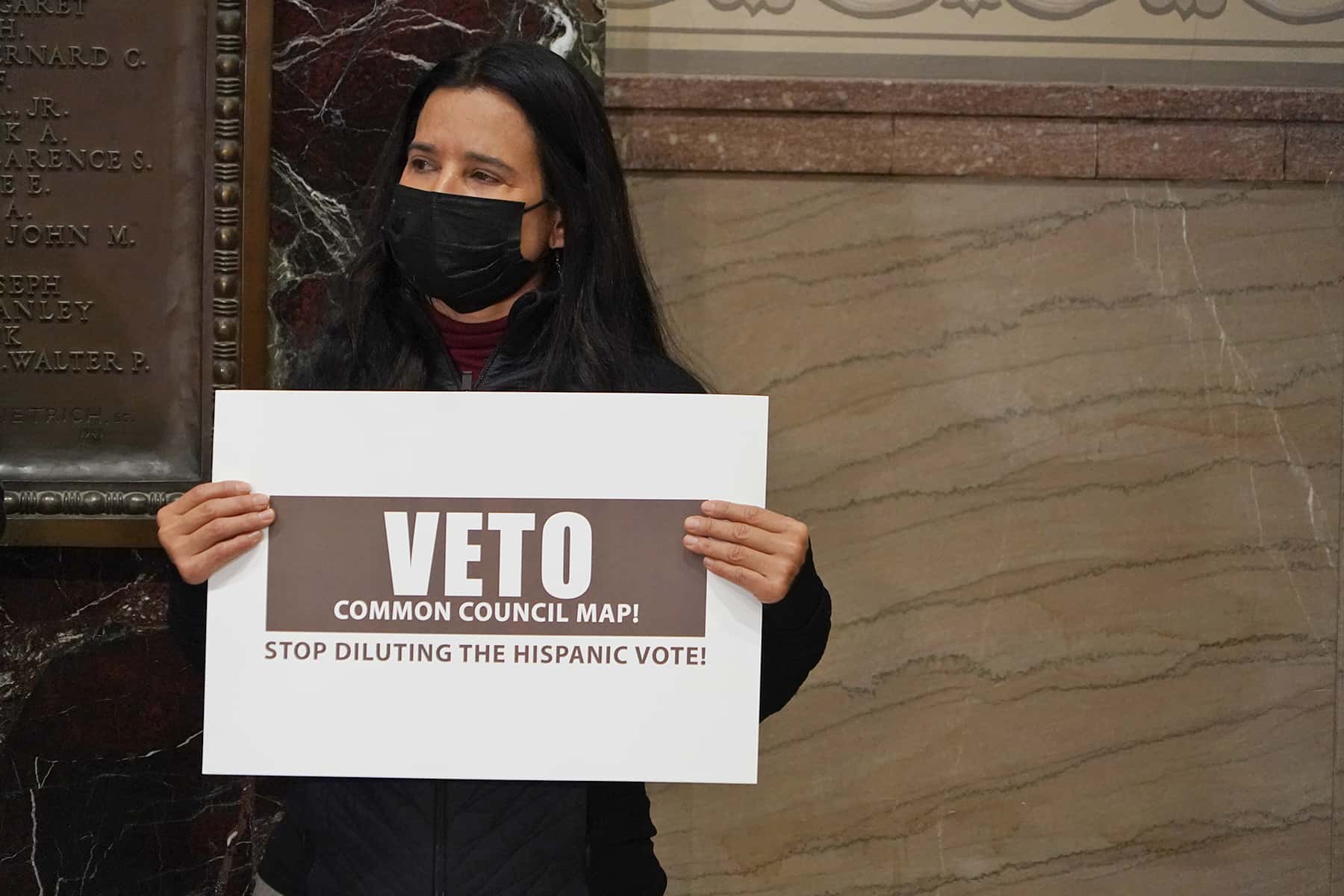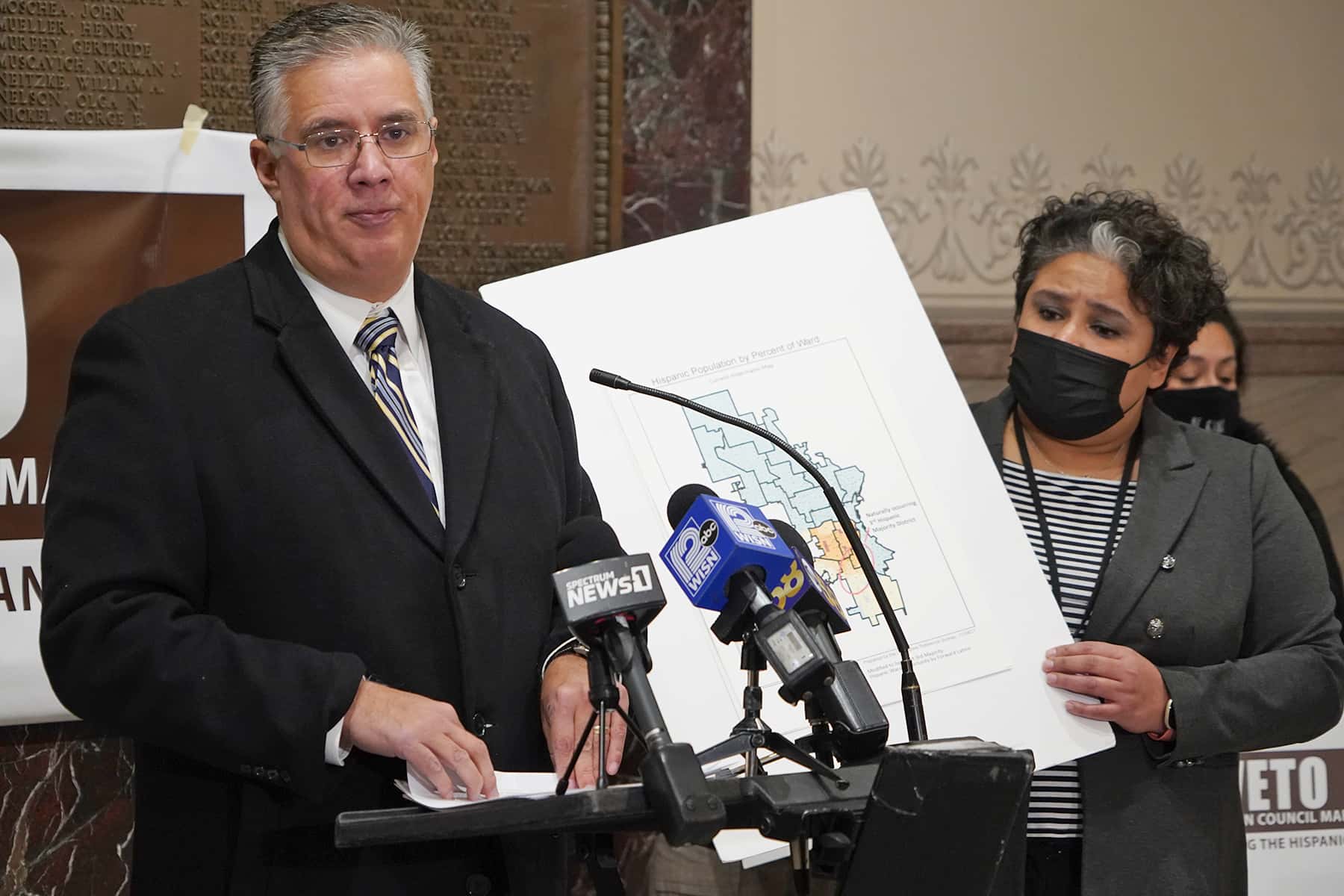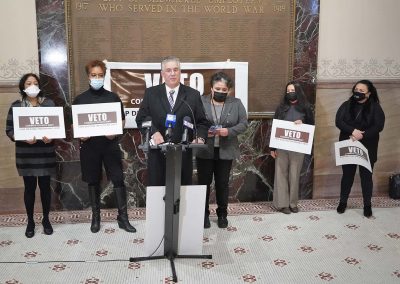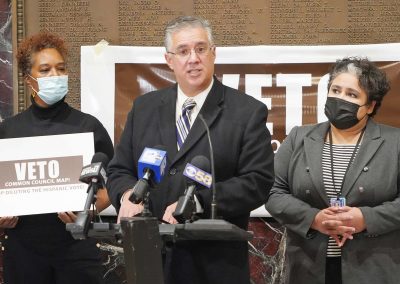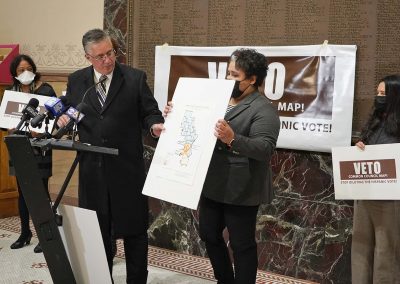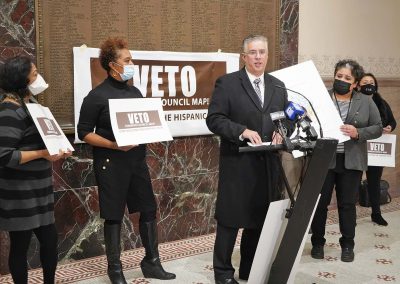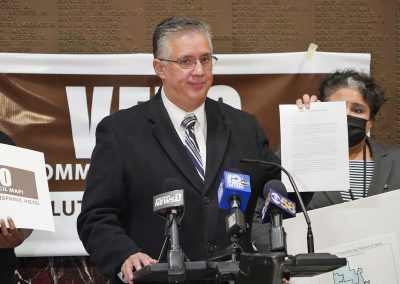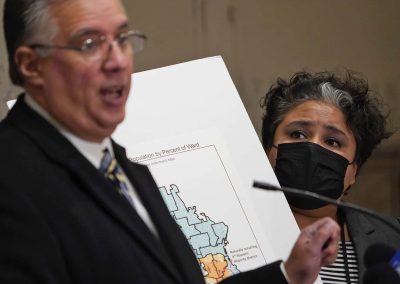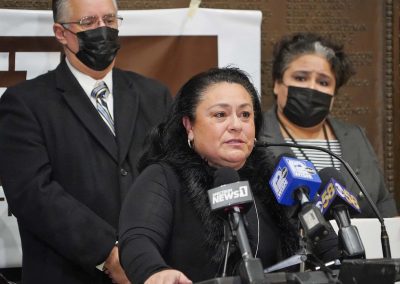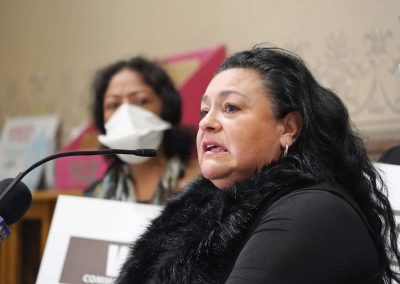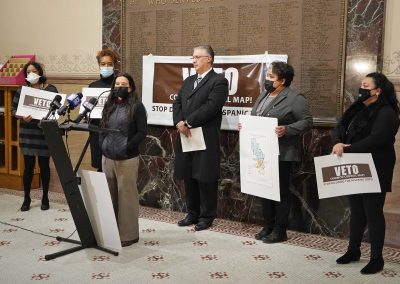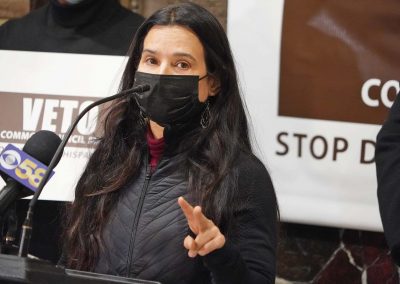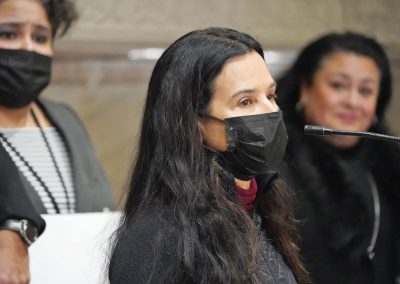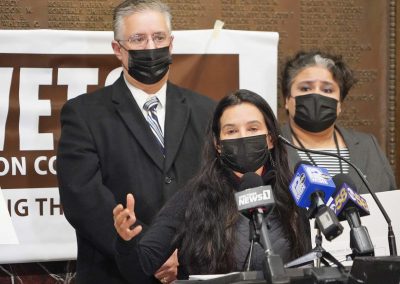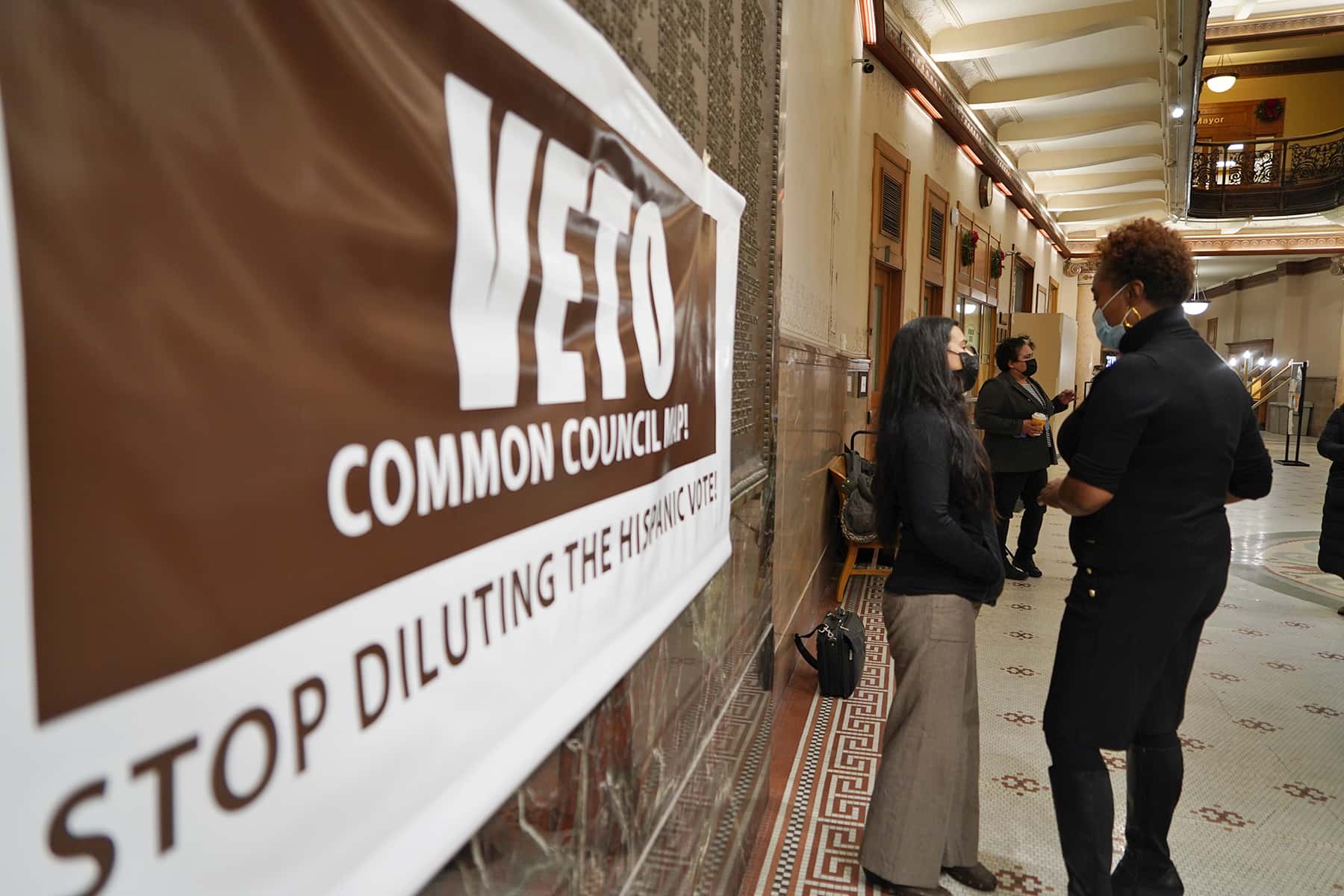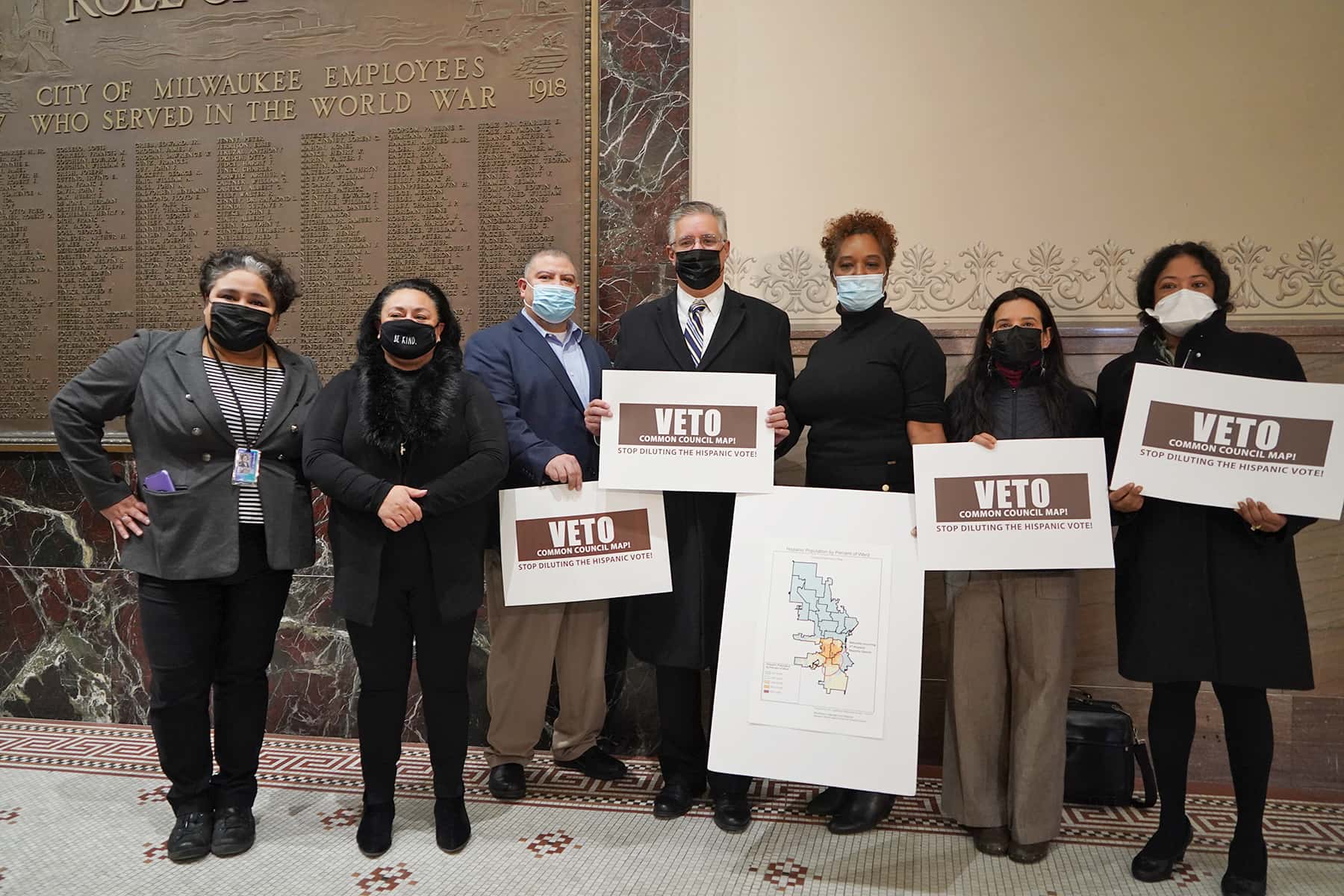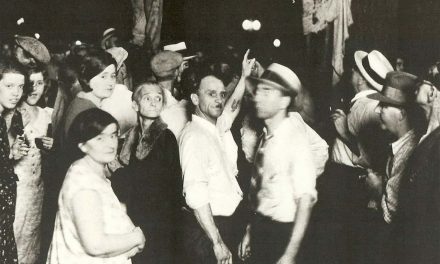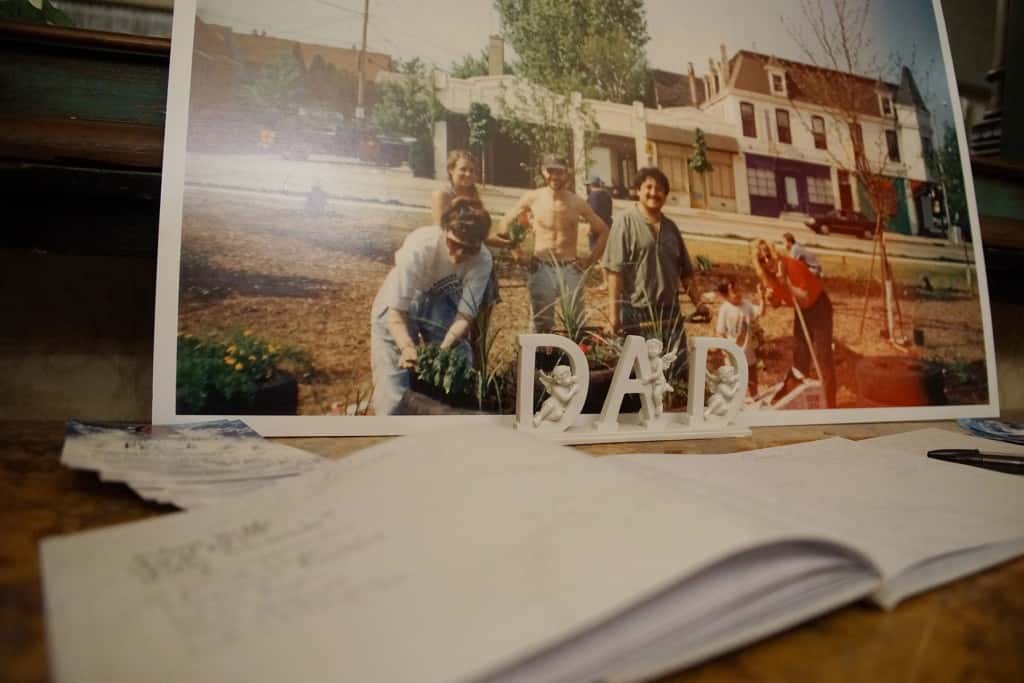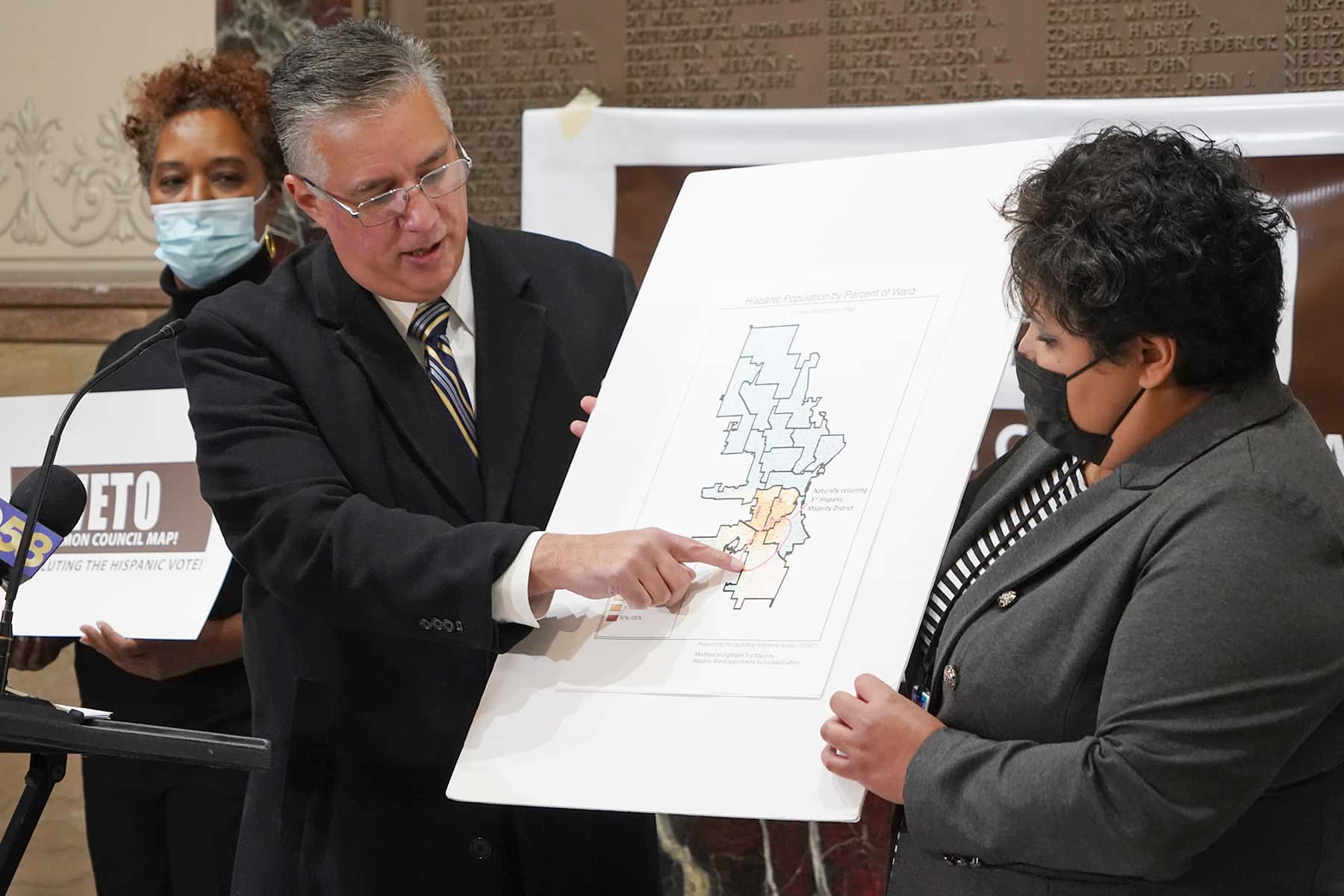
After carefully considering the reapportionment of aldermanic districts, Mayor Tom Barrett vetoed the proposal sent to him by the Milwaukee Common Council on December 6.
The Mayor’s decision followed extensive discussions with elected officials, community members, legal experts, and individuals with experience in redistricting matters.
“The Hispanic population is growing in Milwaukee, and we have an obligation to reflect that growth in the aldermanic districts. The trends are clear, and the district boundaries we set today will remain in place for ten more years,” said Mayor Barrett. “It is important to establish aldermanic districts that are fair now and fair over the next decade.”
Almost immediately after the Common Council adopted the current district boundaries on November 23, several community organizations raised serious concerns about the fairness to Latinx voters. Three Milwaukee advocacy groups, Forward Latino, Voces de la Frontera, and Hispanic Collaborative, each believed that the map was approved in a rush and without sufficient public input.
In his veto message, the Mayor praised the work of Council members. Delays from other levels of government compressed the time available to draw new a map, which complicated the Council’s work. A number of alternative district maps have been proposed by Forward Latino and Voces de la Frontera. The Mayor also offered to work with the Common Council to address the issues of concern.
Forward Latino, Voces de la Frontera, and Hispanic Collaborative feared that the political influence of Milwaukee’s growing Latinx population would be diluted with the new boundaries. The organizations had separately sent letters to Mayor Barrett urging him to veto the Common Council’s map. They included several options for a revised map that they felt would provide a more fair representation for Latinx voters.
“Thank you, Mayor Tom Barrett, for your careful deliberation and thoughtful action. Forward Latino looks forward in working with our partners, as well as with you, Common Council President Chevy Johnson, Chairman Ashanti Hamilton, and the members of the Milwaukee Common Council in fulfilling the true purpose of the redistricting process, to ensure fair representation for all,” said Darryl Morin, National President of Forward Latino in a statement.
The three groups held a press conference at City Hall earlier in the day on December 6 to focus attention on the map issue, and renew their call for Mayor Barrett’s veto before the approaching approval deadline.
The map split Latinx voters into Aldermanic districts 11, 13, and 14, instead of attempting to combine the Latinx majority on the farther south side. Per the 2020 Census, Milwaukee’s Hispanic population comprises 20.1% of the city’s total population yet has only two Hispanic majority districts out of 15 aldermanic districts.
For example, instead of two Latinx “influence districts” that have a one-third Latinx population, advocates proposed an option that the city adopt a new map that includes one Latinx influence district that has 46% Latinx residents. That map would consolidate Milwaukee’s growing Latinx population on the southside of the city, creating a near-majority Latinx district.
“As populations grow, so should political power and representation. These maps are important because they will impact the political power of Milwaukee’s growing Latinx population to have a fair and equal voice in our city for the next decade,” said Christine Neumann-Ortiz, Executive Director of Voces de la Frontera. “The rushed process of passing a new map, while not intentional, contributed to a lack of meaningful engagement from the community.”
Raising further concern, Hispanics were being asked to support a Common Council map that actually reduced the Hispanic population in District 13, a district that experienced significant Hispanic growth and decline in other populations.
“The map passed by the Common Council is a map is clinging to the status quo, and one that sadly dilutes the Hispanic vote,” added Morin. “While we understand the compressed timeline the Common Council was given, so too was the time the community had to participate. Compounding the issue was the lack of tools provided by the city to the community. With nothing but raw population data, and no access to tools for developing test aldermanic district maps, the process was extremely time consuming and costly. It created a natural barrier to community involvement.”
Over the last decade, overall population for the city decreased by 17,611. The reduction would have been much greater, costing Milwaukee even more in the loss of federal funding, had it not been for the substantial growth by 13,300 in the Hispanic community. The Census found demographic shifts of 33,800 less individuals who identify themselves as White, and 15,100 less of those who identify as Black.
“We thank Mayor Barrett for listening to the Latinx community and our appeal that the maps passed by the Common Council be revisited to reflect the growth, movement and importance of the Latinx community on the south side of Milwaukee,” added Neumann-Ortiz. “We call on the Milwaukee Common Council to not override the veto and to move forward on creating maps with input from leaders in the Latinx community. As a majority people of color, working class city, the Common Council has a major opportunity to make Milwaukee a national leader in advancing voting, civil and workers rights by creating fair maps.”
The full Common Council will consider the Mayor’s veto at its next meeting which is scheduled for December 14, 2021.
© Photo
Lee Matz

